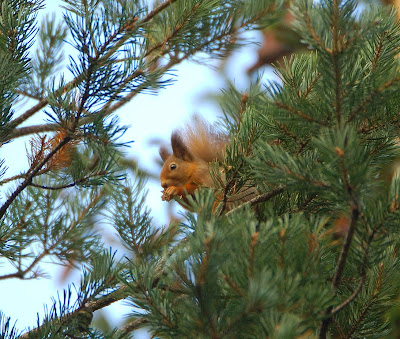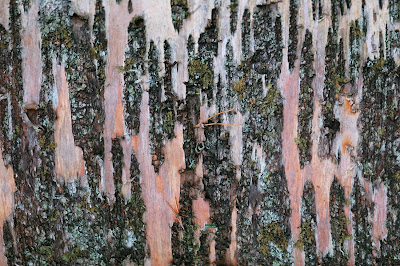Abernethy forest is the largest remnant of ancient Caledonian pine forest in the UK and it's a stronghold for Capercaillie, Scottish Crossbills, Wild Cats, Pine Martens, Crested Tits, Ospreys (Summer only!) and Red Squirrels. Winter brings an influx of Whooper Swans to Lochs Garten and Mallachie.
On this trip I took the Citylink bus from Glasgow to Aviemore which cost me £21 (Apex ticket) and I stayed at Aviemore Youth Hostel (SYHA). The only complaint I have about this hostel is that the old man who runs it harbors a great dislike of young people. I was told off for drinking a cup of tea and reading a map quietly in the kitchen area as there is a 'curfew' at 10pm, after which they put up a barrier rope! This man (who has been there for a number of years) is incredibly rude and I was later told to stay out of the kitchen til 7am (which I completely ignored). I find this 'rule' entirely unreasonable since the first bus is at 7am and I need to eat my breakfast etc before I go hillwalking.
I took the local bus from Aviemore to Nethybridge and then walked along the track to Loch Garten and back, with frequent detours into the forest.
Scots Pine (Pinus sylvestris)are beautiful trees: the branches are warmly russet and the bark is broken into thick scaly crusts, overgrown with pale green lichens. They have an elegant and rounded shape, more like deciduous trees than typical pines. Somehow they remind me of Japanese woodblock prints.
Take a deep breath and enhale the aroma of pine-sap and the peaty, earthier smell of bog-moss...listen and you may hear the cork-popping call of the Capercaillie (Tetrao urogallus).
 |
| Scots Pine (Pinus sylvestris)
|
 |
| Scots Pine (Pinus sylvestris)
|

Weatherwise it was miserably cold with frequent rain and sleet showers but I was well prepared with thick winter clothing, plenty of chocolate and a flask of strong coffee to get me through :)
Red Squirrels have disappeared from most of their former range in the UK but are still very numerous within Abernethy forest itself, in fact, you can almost guarantee seeing them. In winter they grow a thicker, darker coat and their ear tufts become more prominent, which can be seen in the photos below:
 |
| Red Squirrel (Sciurus vulgaris)
|
 |
| Red Squirrel (Sciurus vulgaris)
|
 |
| Norway Spruce (Picea abies) cone, a non-native pine species
|


 |
| Birch (Betula sp.) bark
|

 |
| Bracken (Pteridium aquilinum)
|

When I got to Loch Garten I sat down to have a coffee and spotted a couple of Goldeneye (
Bucephala clangula) right out in the middle of the loch as well as a family group (2 adults and 4 juveniles) of Whooper Swans (
Cygnus cygnus). The Whoopers were flighty and I couldn't get close to them to take a decent pic.
While I was sitting down I suddenly heard something behind me and turned round to discover a big fierce dog coming towards me. The dog was alsatian sized and stopped within a metre of me, barking and growling. At first I thought I could talk to it calmly and it might magically transform into a more friendly beast. After a few attempts at a squeaky "nice doggie....", I was forced to use my tripod to fend off the animal as it began jumping at my throat and snapping. Since no owner seemed to be around (for about 10 minutes) I started to fear that this might be a feral dog and that I would have to fight to the death in order to escape :(
Eventually an owner did appear and did not even come over to apologise or ask if I was ok! I was so shaken that I was afraid to go over and confront her, especially since there was noone around to back me up. I have found dog-owners in the UK (in general) to be very disrespectful of other people: this is not the first time I have been attacked by a dog in a public place (often as a child) and many dog-owners find it perfectly acceptable to let their dogs shit all over the place or attack random strangers/wildlife, it makes me very angry!
 |
| Whooper Swans (Cygnus cygnus), the juveniles have pinkish bills and are slightly greyish. |























